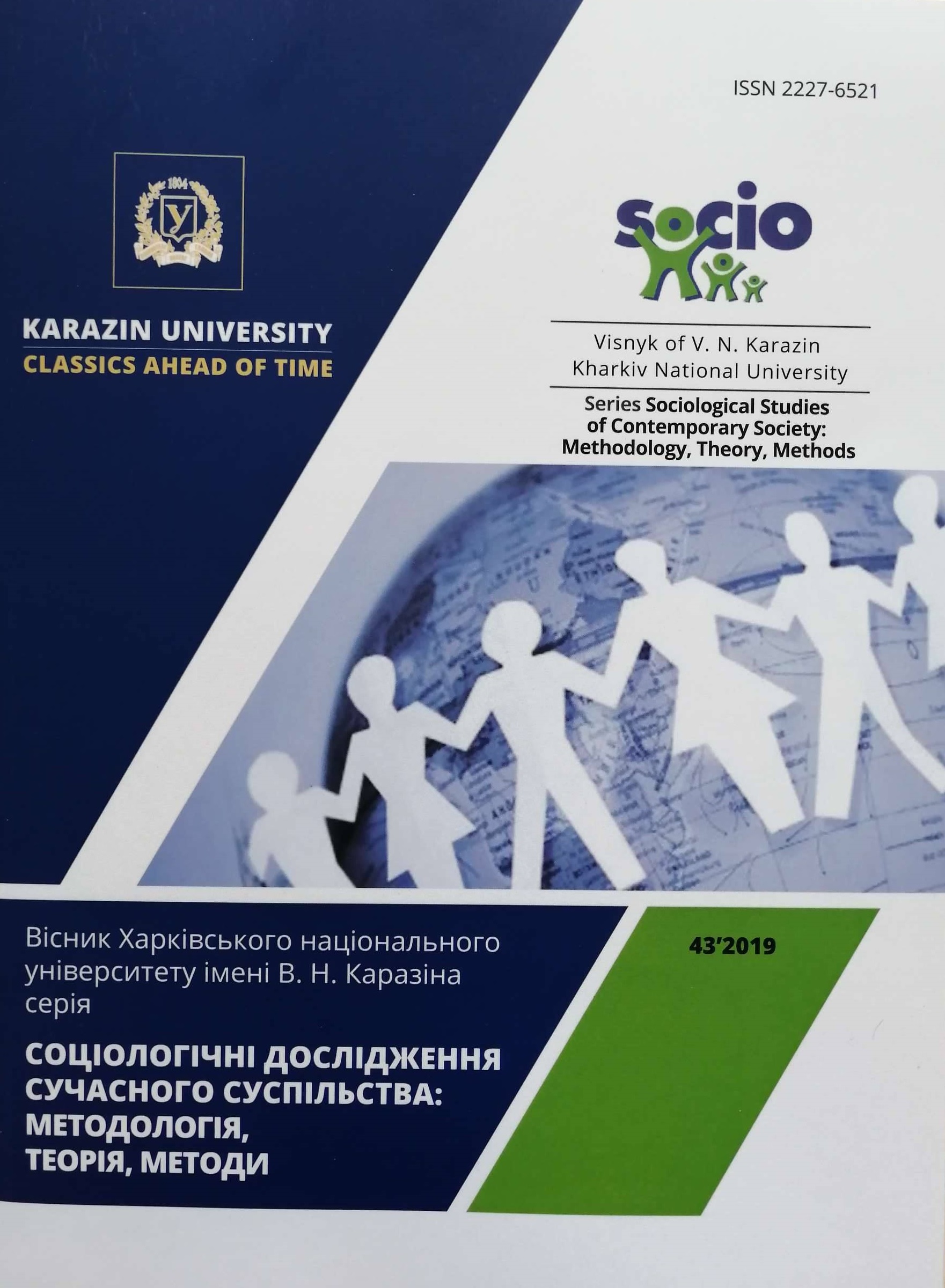Possibilities of Involving the Semiotic Approach to the Urban Space Analysis
Abstract
The main focus of the article is on the analysis of the heuristic potential of the semiotic approach in the study of urban space. Having identified the city as a cultural object as a research object, and starting from the methodological orientations of the sociocultural approach and post-structuralist analysis options, it is proposed to perceive the symbolic space of the city through the lens of semiotic optics as a subject area of research. The city as a socio-cultural phenomenon can therefore be considered as a collection of landmark objects. In order to understand the methodological potential of semiotics for city analysis, it is first of all necessary to consider the genesis of semiotic ideas and try to adapt them to city analysis as a landmark space. As a theoretical basis, the evolution of the views of a number of foreign scientists has been traced, in particular the attention has been paid to the scientific works of V. Benjamin, R. Bart, K. Levy-Strauss, C. Jenks, K. Lynch, and G. Simmel. The works of F. de Saussure, C. Pierce, C. Morris, Y. Lotman are distinguished as basic works in the field of semiotic analytics. An important aspect of the theoretical evolution of views on semiotic analysis is the proposed position of F. de Saussure on the basis of structuralism and poststructuralism, allowing the analysis of language, as well as any sign system, in the form of a structure with a fixed correspondence of signs and meanings. This thesis is present within the framework of structuralism and post structuralism. It is analyzed that the ideas of the "Frege triangle" and the "Oden-Richards triangle" in the study of cities significantly expand the potential of urban studies. It is emphasized that the use of tools of the semiotic approach allows to combine the analysis of the symbolic-symbolic system of the city and the space of urban everyday life.
Downloads
References
Воронкова В. Г. Планування та прогнозування в умовах ринку: навчальний посібник. Київ: ВД «Професіонал», 2006. 352 с.
Грушко В. Міста у культурно-семіотичному процесі формування геополітичних просторів та зон підвищеної геополітичної напруги. Наукові записки Тернопільського національного педагогічного університету імені Володимира Гнатюка. Серія: Географія. Тернопіль: Терноп. нац. пед. ун-т ім. Володимира Гнатюка. 2014. №2. C. 61-69.
Жулькевська О. В., Грищенко М. В. Суспільний простір міста як об’єкт соціологічного вивчення та емпіричний референт соціальних змін. Соціологічні студії. 2012. №.1. С. 61-66. URL: https://sociostudios.eenu.edu.ua/index.php/socio/article/view/25/14
Ковтуненко Е. С. Методологічні підходи в семіотичному аналізі. Наукові праці: науково-методичних журнал. 2013. Вип. 199. Т.211. С. 44-49.
Лінда С. М. Структура «архітектурного знака» та «архітектурного тексту» в семіотичному аналізі об’єктів історизму. Lviv Polytechnic National University Institutional Repository. URL: http://ena.lp.edu.ua/bitstream/ntb/15577/1/4-14-25.pdf (дата звернення: 20.07.19) назва з екрану.
Лотман Ю. М. Внутри мыслящих миров, 1996. Москва: Языки русской культуры. 464 c.
Лотман Ю. М. Люди и знаки. Семиосфера. 2000. СПб.: Искусство-СПБ, 704 с.
Малес Л. В. Соціокультурний аналіз як пізнавальна стратегія в ситуації поліпарадигмальності соціологічного теоретизування. Актуальні проблеми соціології, психології, педагогіки. 2011. №12. С. 11-15.
Міклін М. В. Місто як структуроутворювальна машина знаків у феноменологічній перспективі. Modern directions of theoretical and applied researches. URL: http://www.sworld.education/index.php/ru/conference/the-content-of-conferences/archives-of-individual-conferences/march-2015. (дата звернення: 23.07.19). Назва з екрану.
Пирс Ч. Начала прагматизма. СПб.: Лаборатория метафизических исследований философского факультета СПбГУ; Алетейя, 2000. С. 49-52.
Співак Д. Семіотика як методологія дослідження політичної урбаністики. Науковий часопис НПУ імені М. П. Драгоманова. Серія 22. 2016. Випуск 20. С. 3-38.
Соссюр Ф. Курс общей лингвистики. Биографические и критические заметки о Ф. де Соссюре. Екатеринбург: Изд-во Урал. ун-та. 1999 С. 68-78.
Фреге Г. Смысл и денотат. Я иду на занятия… Семиотика. Хрестоматия. Москва: Изд-во Ипполитова. 2005. С. 43-66.
Червенко К. М. 2012 Символіка міста: семіотичний підхід. Ученые записки Таврического национального университета им. В. И. Вернадского. Серия «Философия. Культурология. Политология. Социология». Том 24 (65). № 4. С. 214–219.





